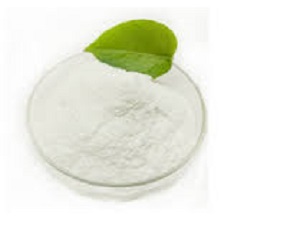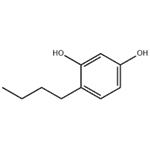The pharmacologic action and use of 4-butylresorcinol
Aug 30,2019
Hyperpigmentary disorders like melasma, actinic and senile lentigines are a major cosmetic concern. Therefore, many topical products are available, containing various active ingredients aiming to reduce melanin production and distribution. The most prominent target for inhibitors of hyperpigmentation is tyrosinase, the key regulator of melanin production. Many inhibitors of tyrosinase are described in the literature; however, most of them lack clinical efficacy.

Pharmacologic action
Arbutin and hydroquinone only weakly inhibit human tyrosinase with a half maximal inhibitory concentration (IC(50)) in the millimolar range. Kojic acid is 10 times more potent with an IC(50) of approximately 500 μmol/L. However, by far the most potent inhibitor of human tyrosinase is 4-butylresorcinol with an IC(50) of 21 μmol/L. In artificial skin models, arbutin was least active with an IC(50) for inhibition of melanin production > 5000 μmol/L. Kojic acid inhibited with an IC(50) > 400 μmol/L.
Interestingly, hydroquinone inhibited melanin production in MelanoDerms with an IC(50) below 40 μmol/L, probably due to a mechanism different from tyrosinase inhibition. Again, 4-butylresorcinol was the most potent inhibitor with an IC(50) of 13.5 μmol/L. In vivo efficacy of 4-butyl-resorcinol was confirmed in clinical studies. Subjects with age spots on the forearm treated twice daily two age spots with a formula containing 4-butylresorcinol and two control age spots with the corresponding vehicle. Within 8 weeks, 4-butylresorcinol reduced visibly the appearance of age spots, while the control spots showed no improvement. A second study showed that 4-butylresorcinol was more effective than 4-hexylresorcinol and 4-phenylethylresorcinol.
Use
Relevant experiment proved that prove the high inhibitory capacity of 4-butylresorcinol on human tyrosinase activity, exceeding by far the potency of hydroquinone, arbutin and kojic acid. The resulting clinical improvement of skin hyperpigmentations reveals 4-butylresorcinol as a very valuable active compound for the management of pigmentation disorders.
- Related articles
- Related Qustion
- 4-Butylresorcinol: activities, clinical application and safety Aug 4, 2023
4-Butylresorcinol inhibits melanin synthesis, is effective for melasma, but may cause allergies. Patch test before use.
Phenothiazine, abbreviated PTZ, is an organic compound that has the formula S(C6H4)2NH and is related to the thiazine-class of heterocyclic compounds. Derivatives of phenothiazine are highly bioactive and have widespread use and rich histor....
Aug 29,2019APII need to make 10M ammonium acetate for DNA extraction. I calculated the amount required for 70 ml solution and started dissolving it using a magnetic stirrer. It has been four hours, but the solute hasn't dissolved yet. Is this normal? How....
Aug 30,2019Organic Chemistry4-Butylresorcinol
18979-61-8You may like
- What is the effect of water on 3-aminopropyltriethoxysilane (APTES)?
May 17, 2024
- The solubility of Succinic anhydride
May 11, 2024
- How to synthesize Benzyl vinylcarbamate?
Mar 26, 2024
4-Butylresorcinol manufacturers
- 4-Butylresorcinol
-

- $70.00 / 1kg
- 2024-05-13
- CAS:18979-61-8
- Min. Order: 1kg
- Purity: 99
- Supply Ability: 5000
- 4-Butylresorcinol
-

- $18.00 / 10kg
- 2024-05-13
- CAS:18979-61-8
- Min. Order: 1kg
- Purity: 99.9
- Supply Ability: 5000
- 4-Butylresorcinol
-

- $0.00 / 1kg
- 2024-05-11
- CAS:18979-61-8
- Min. Order: 0.10000000149011612kg
- Purity: 99%
- Supply Ability: 2000kgs




